

Home > HRM Overview > Heart Rate Training Zones
Heart Rate Training ZonesThe key to training with a heart rate monitor is a basic understanding of the concept of heart rate training zones. These training zones are often expressed as percentages of your maximum heart rate. Note the percentages which define the zones are approximate only. They are not cast in stone and can vary quite a lot from individual to individual. Treat them as useful starting points and modify them to suit your own situation. Table: Heart Rate Training Zones
Let me give some examples. Let's say that you have not exercised for years and you want to start doing it again. You would start training at the 50 to 60% max heart rate zone. This is easy and gentle training which is great for beginners to keep healthy and fit. For experienced exercisers, this zone is often also used for warming up. If the main goal of your training is to lose weight, then you would want to train at an intensity so that you burn off a lot of body fat while you are exercising. You can choose to exercise either in the 50 to 60% or in the 60 to 70% max heart rate zone. Remember that if your aim is to lose weight, your training duration plays also a very important role. You should train for a minimum of an hour, preferably longer to get the most out of your training. It is not just a matter of training at the right zone. You should also ensure that you burn slightly more calories than you take in from your diet. If your main goal is to train for an endurance event, say, a half marathon, you would be aiming to train at the 70 to 80% max heart rate zone. Training at this zone improves your aerobic endurance i.e. the ability to do prolonged exercise without fatigue. If your goal for the current session is to train your body to increase your lactic threshold i.e. delay your transition from aerobic to anaerobic metabolism so that you can stay aerobic for longer and at higher intensities, you would aim to train at the 80 to 90% heart rate zone. Example: If your lactic threshold was 80% of your maximum heart rate and, after consistently training in this zone, you managed to increase it to 90% of your maximum heart rate, you would notice a very significant improvement in your endurance performance. If you are already very fit and the goal of your session is to improve your capacity for peak performance, then you may decide to train at the 90 to 100% max heart rate zone, for short durations. Training in this zone can be used also to increase your maximum aerobic capacity (VO2 Max). Training in this zone is usually done via interval workouts. For example, if you are a competitive runner, you will sometimes train in this zone to increase your raw speed and sprinting capability, as sometimes these are what it takes to win a close race, even in a long distance event. Note that training in the 90 to 100% zone should only be done by fit athletes with no history of cardiovascular diseases.
What are my maximum heart rate and heart rate training zones?Your maximum heart rate (MaxHR) can be either measured or calculated. For most people it is enough to do a quick calculation as a rough first estimate.
Example: Max Heart Rate of a woman aged 36 = 226 -36 = 190
Her 50% HR = 190 x 0.5 = 95 So her 60 to 70% heart rate training zone is 114 to 133. Note that the calculated heart rate is approximate only and can be considerably off the mark. The only way to find out for real is to do a test and measure it. Karvonen Formula - A more refined way to calculate heart rate training zonesSome people advocate incorporating your resting heart rate (HR Min) into calculating your heart rate training zones using the Karvonen formula. In that case, the percentages for the training zones correspond to the percentages of the heart rate range (i.e. the difference between your maximum and minimum heart rates), rather than the percentages of the maximum heart rate. Don't forget to add the minimum heart rate back to the numbers obtained using this method!A quick example will make clear. Take the case of the woman aged 36 above. Her calculated maximum heart rate is 190. Let's assume that her resting heart rate is 60. In this case:
Her Heart Rate Range (HR Range) = HR Max - HR Min = 190 - 60 = 130 So according to this method, her 60 to 70% heart rate training zone is 138 to 151. This is quite different from the numbers calculated using the maximum heart rate method. The Karvonen formula is more personalised, i.e. it takes into account your own resting heart rate. If you are already quite fit, you may find the zones defined by the percentages of maximum heart rate method a little too easy. The Karvonen formula may be a better method for you to work out your zones. However, please remember that no matter which method you use to estimate your heart rate training zone limits, the results are approximate only. There are many other schemes to calculate your heart rate zone limits (e.g. using your measured lactic threshold to determine your zones). Probably as many schemes as there are articles and books about heart rate monitor training. You will also notice that different schemes interpret the training significance of each zone differently. If you are starting out, keep things simple and use the simple percentage of maximum heart rate scheme as the basis of determining your zones. Later on, as you have gained more experience and knowledge with heart rate training, you will be in a position to select a new scheme (or modify an existing scheme) to suit yourself.
Not sure which heart rate monitor is right for you? Take a look at the Which Heart Rate Monitor page.
|
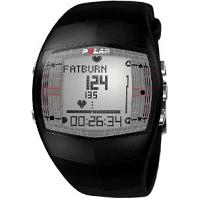
Polar FT40
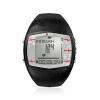
Polar FT40 For Women
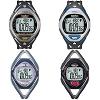
Timex Ironman Race Trainer
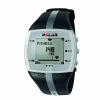
Polar FT7
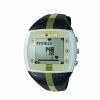
Polar FT7 For Women
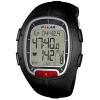
Polar RS100
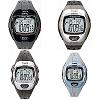
Timex Ironman Zone Trainer
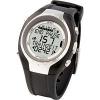
Sigma Sport PC 15
Recommended Basic Fitness HRMs:
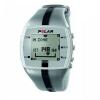
Polar FT4
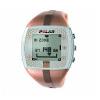
Polar FT4 For Women
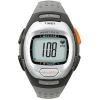
Timex T5G971 Personal Trainer
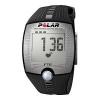
Polar FT2
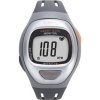
Timex T5G941 Easy Trainer
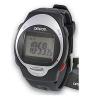
Omron HR-100C